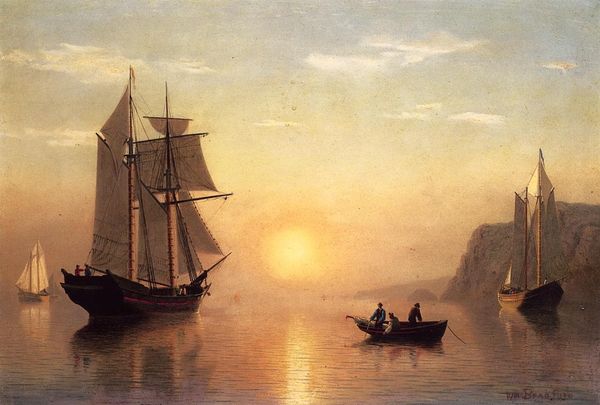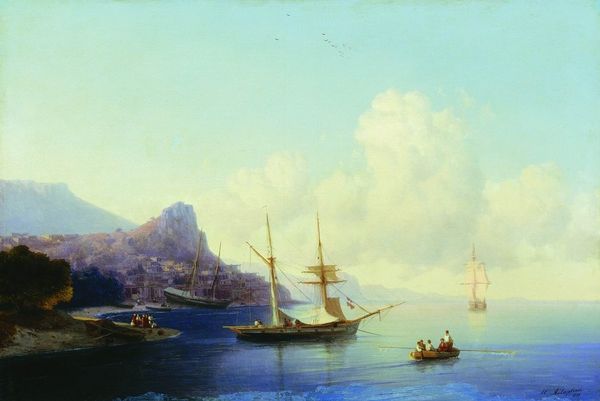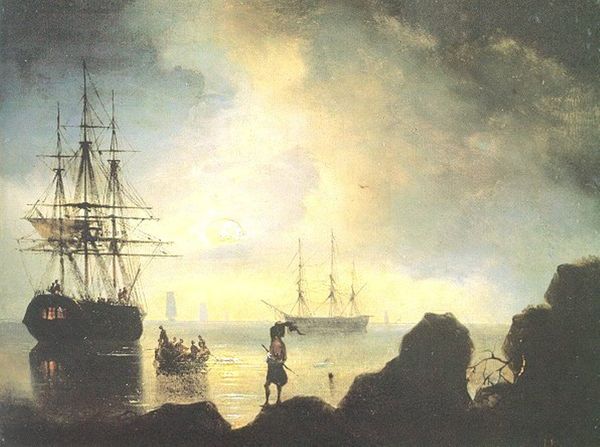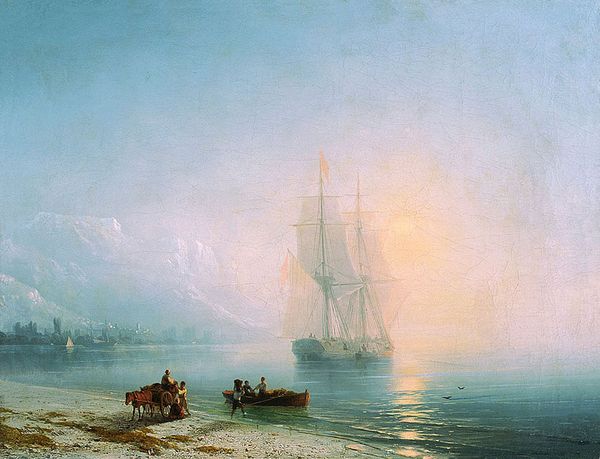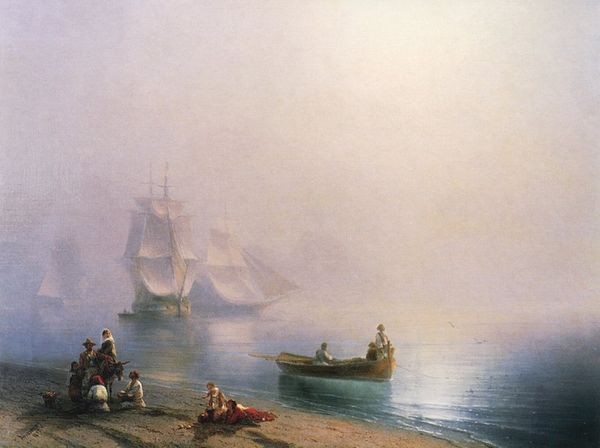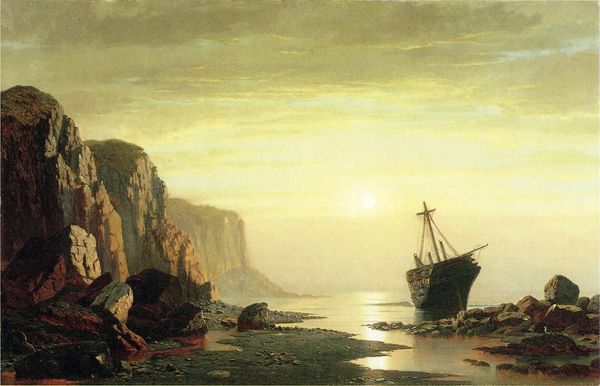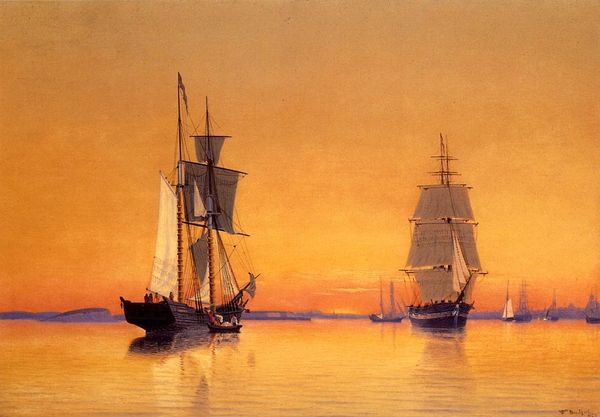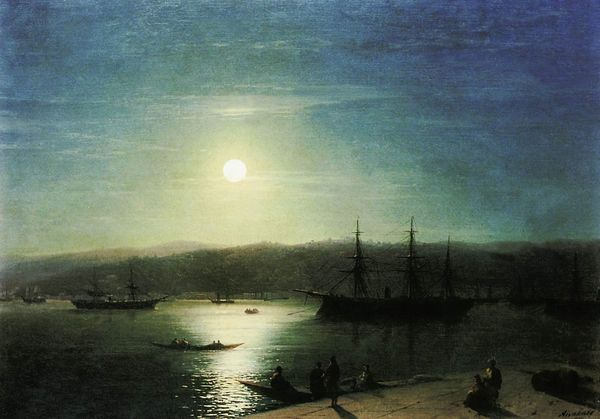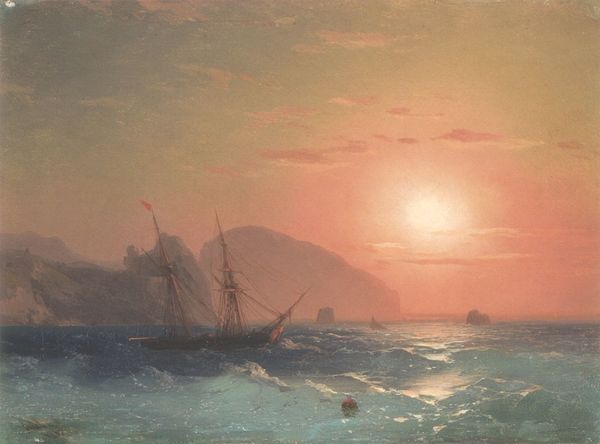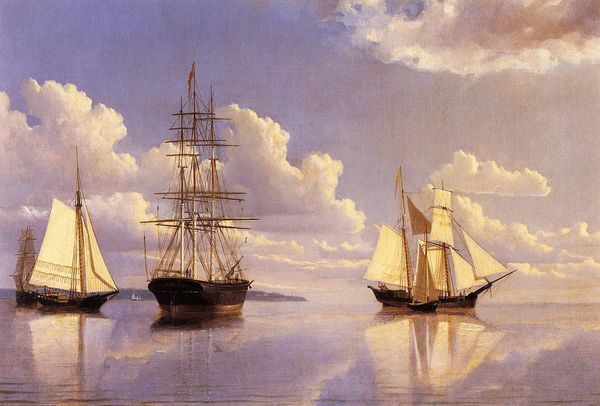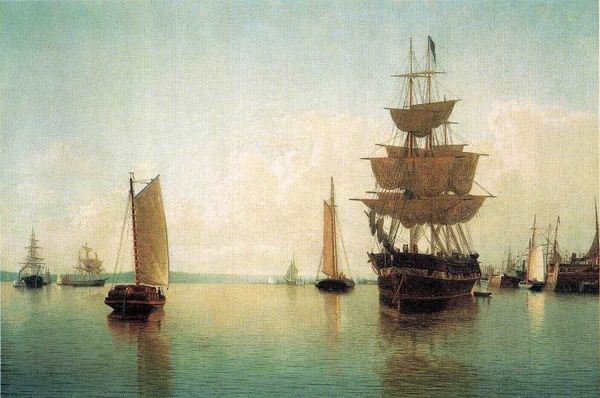
Copyright: Public domain
Curator: What a beautiful, serene scene. "Sunrise off Grand Manan," an 1860 oil on canvas by William Bradford, captures a coastal sunrise with fishing boats and a large sailing vessel dominating the view. It’s bathed in a gentle, almost ethereal light. Editor: There's something about that muted palette that creates such a tranquil mood. Notice the compositional balance; the large ship counterposed with the small fishing boat and the rocky headland in the distance—it's subtly masterful. The hazy brushwork adds to the painting's dreamlike quality. Curator: Bradford, an American artist, focused extensively on maritime subjects. He travelled extensively, documenting the whaling industry and Arctic landscapes. His work can be interpreted through the lens of 19th-century industrial expansion and its relationship to both the environment and indigenous populations. What do we make of its position in that time? Editor: Yes, the surface appearance offers immediate sensory pleasures, the overall balance of light and dark is critical to understand what’s going on beneath its beauty. We might unpack it as a system, almost mathematical, that produces a sensation or feeling, what you are framing as historical context, can be read, or deciphered, from form. Curator: And how these seemingly idyllic scenes obscure the realities of labour, colonial expansion, and environmental change, all inextricably linked to maritime activity. The sublime is often weaponized in these sorts of romantic landscapes to justify control over these resources. The fishermen are actively performing exploitative labor that impacts the surrounding landscape. Editor: While it is, without a doubt, steeped in these societal factors, can we look more deeply into the effects that surface here, as brushstrokes and light interacting? The very particular treatment of light is how the meaning translates to us here, it isn’t necessarily separate. Curator: It's through these different levels that meaning arises for contemporary viewers. How can we encourage dialogues between this painting, its time, and our own to spark a broader dialogue about labor, industrialization and capitalist influence? Editor: Perhaps the answer lies in simply looking— closely considering these formal strategies, while embracing this artwork’s complexity within larger social narratives. Curator: It is within these visual contradictions of historical and cultural currents that these moments come alive for a viewer.
Comments
No comments
Be the first to comment and join the conversation on the ultimate creative platform.
